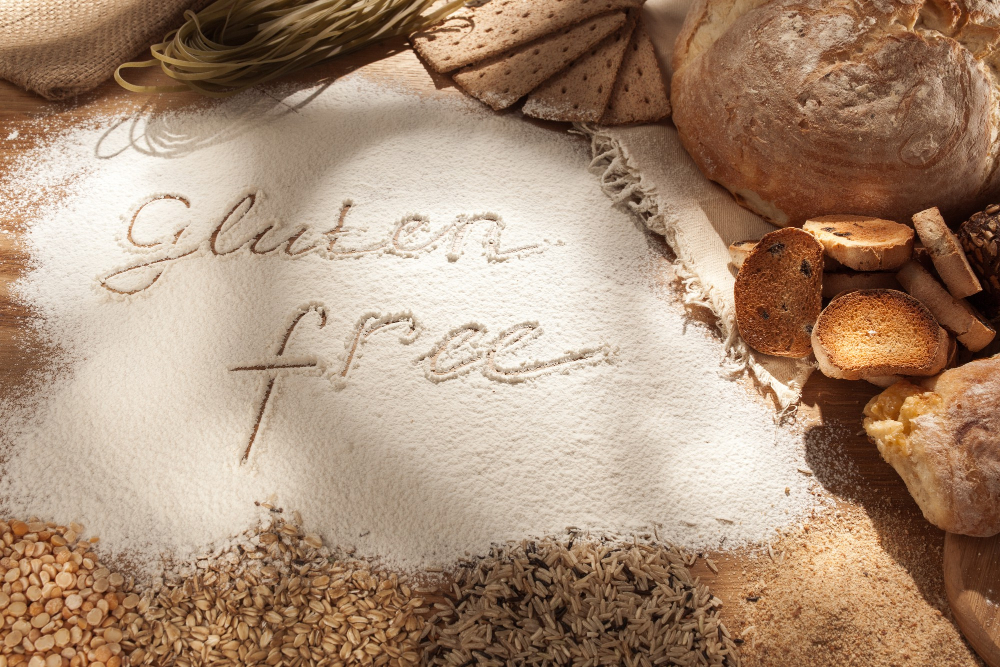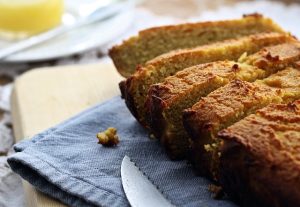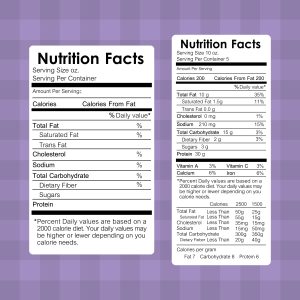In the realm of contemporary cuisine, gluten-free flours have emerged as a cornerstone, particularly for those seeking healthier alternatives without compromising on taste or texture. As we navigate the landscape of these versatile ingredients, it becomes evident that the world of gluten-free flours is both expansive and nuanced, offering a myriad of options for both the novice and experienced baker.
Understanding Gluten-Free Flours – Composition and Health Benefits
The journey into the world of gluten-free flours begins with an understanding of their composition. Unlike traditional wheat flour, these alternatives are derived from a variety of sources including nuts, seeds, and grains that naturally do not contain gluten. From the protein-rich almond flour to the hearty, nutrient-dense buckwheat flour, each type brings its unique nutritional profile. This variety not only caters to those with gluten intolerance but also adds an extra layer of health benefits to our diets. The high fiber content in coconut flour, for instance, aids in digestion, while the iron and magnesium in quinoa flour contribute to overall health and well-being. Moreover, these flours can be a boon for weight management, as many have a lower glycemic index compared to traditional wheat flour, making them an excellent choice for those monitoring their blood sugar levels.
In addition to their health benefits, these flours are a testament to culinary versatility. Each flour has its unique flavor profile and textural properties, which can be harnessed to create a range of dishes that appeal to both taste and health. For instance, almond flour, with its subtle nutty undertones, is perfect for adding richness to cakes and pastries. Similarly, the mild flavor of rice flour makes it an ideal thickening agent for sauces and soups, ensuring that dietary restrictions do not come at the cost of flavor.
Culinary Applications and Practical Tips for Using Gluten-Free Flours
As we delve deeper into the practical aspects of using gluten-free flours, it’s important to understand that they behave differently from traditional wheat flour in recipes. This difference is primarily due to the absence of gluten, which acts as a binding agent in baking. Therefore, when using gluten-free flours, it’s often necessary to incorporate other ingredients to mimic the properties of gluten. Xanthan gum and psyllium husk are popular choices, providing the necessary elasticity and structure to baked goods. Additionally, blending different gluten-free flours can yield better results than using a single type, as this allows for a balance in flavor and texture. For example, a combination of rice flour and tapioca flour can create a light, airy texture in cakes, while a mix of almond flour and coconut flour can offer a moist, dense consistency for brownies.
Another important aspect to consider is the liquid absorption rate, which varies significantly among gluten-free flours. For instance, coconut flour is highly absorbent and requires more liquid to prevent dryness in recipes. This characteristic makes it essential to adjust the amount of liquid in traditional recipes when substituting with gluten-free flours. Experimentation and adjustment are key in achieving the desired consistency and flavor profile.
Moreover, the art of gluten-free cooking extends beyond baking. These flours are also used in a variety of savory dishes. Chickpea flour, with its rich, earthy flavor, is a staple in many Indian and Middle Eastern recipes, often used to make flatbreads and fritters. Similarly, corn flour, with its distinctive taste, is widely used in Latin American cuisine, particularly in making tortillas and tamales.
Let’s explore some types of gluten-free flours, each with its unique properties and culinary uses:
- Almond Flour: Made from finely ground almonds, almond flour is high in protein and rich in vitamins and minerals, particularly vitamin E and magnesium. Its nutty flavor and moist texture make it a popular choice for baking cakes, cookies, and bread. Almond flour is also used as a low-carb alternative for breading in savory dishes.
- Coconut Flour: Derived from dried coconut meat, coconut flour is exceptionally high in fiber and low in carbohydrates. It has a light, sweet taste and absorbs a lot of moisture, requiring adjustments in liquid content when used in baking. Ideal for making muffins, pancakes, and other baked goods, coconut flour is a favorite among those following paleo and keto diets.
- Rice Flour: Rice flour, particularly its white and brown varieties, is a staple in gluten-free baking. It has a neutral flavor and a fine texture, making it a versatile flour for a wide range of recipes. Brown rice flour, being whole grain, is richer in nutrients compared to white rice flour. It’s commonly used in noodles, as a thickener for sauces, and in a variety of baked goods.
- Buckwheat Flour: Despite its name, buckwheat is not related to wheat and is completely gluten-free. It has a strong, nutty flavor and is rich in antioxidants and minerals. Buckwheat flour is excellent for making robust bread, pancakes, and is traditionally used in Japanese soba noodles. It’s also a great choice for adding a hearty texture to muffins and quick bread.
- Tapioca Flour: Extracted from the cassava root, tapioca flour is a light, fine, starchy flour. It is often used as a thickener in pies, soups, and sauces. Due to its neutral flavor and smooth texture, it’s commonly combined with other gluten-free flours to improve the texture of baked goods. Tapioca flour is also used in making gluten-free bread and Brazilian cheese bread (Pão de Queijo).
Each of these gluten-free flours offers unique characteristics and benefits, providing ample opportunities for experimentation and creativity in gluten-free cooking and baking.
In conclusion, exploring the world of gluten-free flours opens up a realm of culinary possibilities, allowing us to create dishes that are not only healthy but also rich in flavor and texture. Whether it’s baking a batch of almond flour cookies or thickening a sauce with rice flour, these alternatives offer a world of creativity and health benefits. By understanding the properties and applications of different gluten-free flours, we can effortlessly incorporate them into our cooking and baking, making our meals not only delicious but also nutritious.




